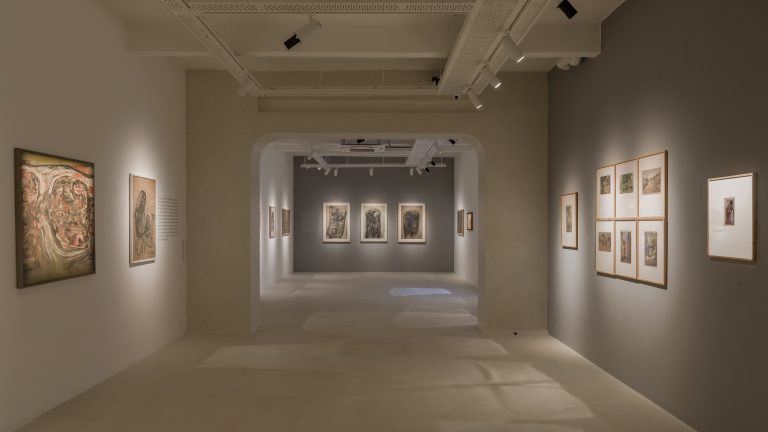Taking the vintage wooden stairs of the heritage building Devidas Mansion to reach Jhaveri Contemporary, Colaba on the third floor is an experience imbued with reminiscence around the centuries-old past. The architectural beauty of the Mansion speaks volumes about its becoming: the history of its paraphernalia has witnessed and braved the many events dotting the continuous making of a nation. As the door of the gallery opens, the meaning-making exercise of history swiftly ushers in the exhibition ’A Smear and the Crown’ by the textile artist Sayan Chanda. The ritual of smearing the crown of the head or an object with vermillion is a way to breathe life into them. Nestled between the twin wooden windows, which overlook the Gateway of India, the narrow wall adorns the long Serpent Deity 2—a site unmissable as one enters the space. Made out of red-dyed hand-spun cotton, Serpent Deity 2 with raw and thick weaves complements the excoriation of the skin of the wall. The reimagination of the clayware objects of votive offerings in the series Shapeshifters unsettles the break in the circle of time. Be it the coarse surface of the tapestries or incidental spontaneous sculptural objects, Chanda does not dissuade the transplantation of the point of historical reference to define his contemporary art practice. As both witness and bearer of a sliver of the past, Chanda revitalizes it to keep it outside from the field of obsolete.
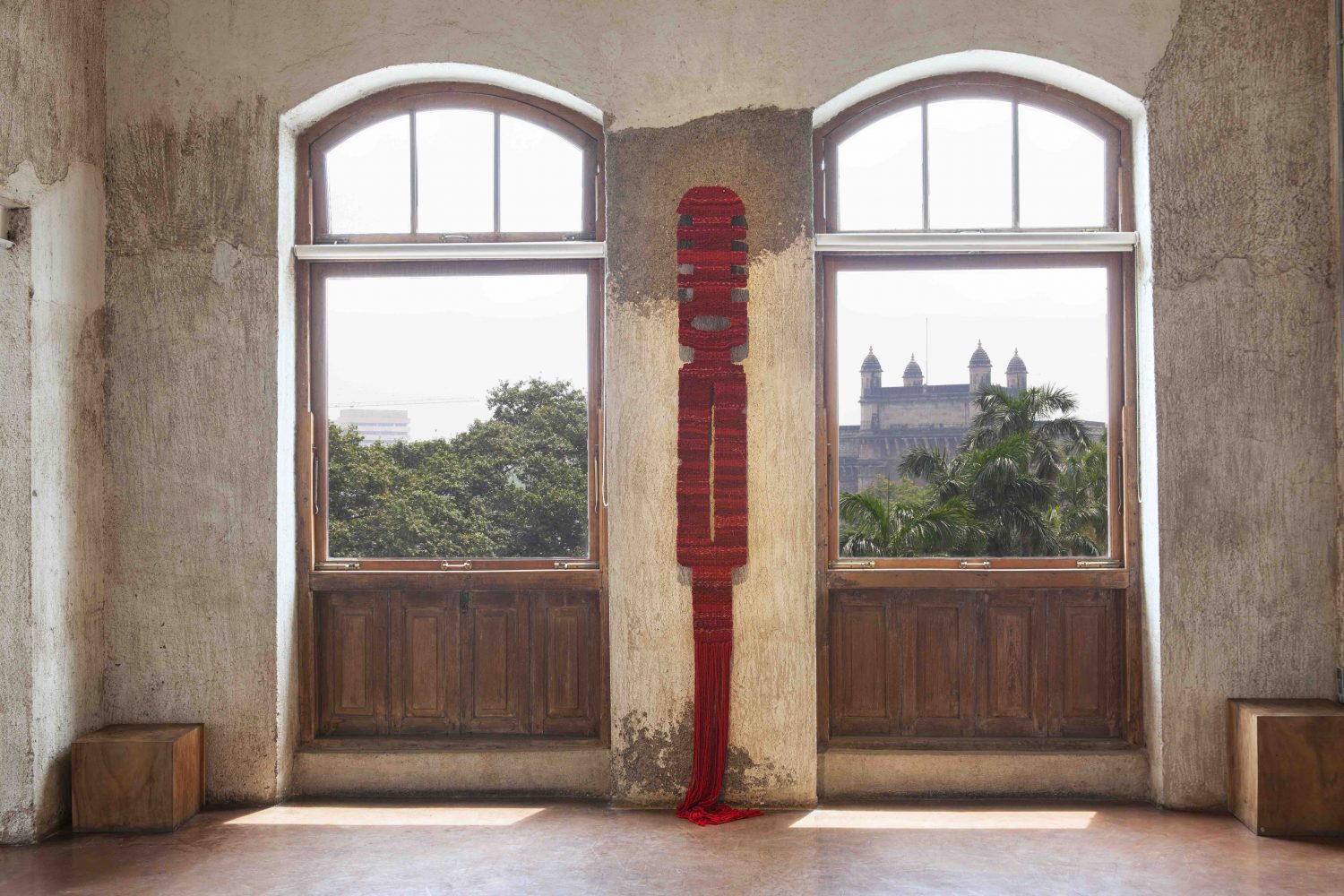
In the same vicinity of South Bombay, the exhibition ’Event, Memory, Metaphor’, curated by Anish Gawande, at TARQ opens a critical enquiry into the afterlives of archives. The title succinctly traces the imprints borne by the memory of an event in history—personal, political or collective—in the form of a metaphor. The axiom ‘engraved in the stone’ speaks of the laborious exercise of engraving – an act to inscribe the inherited value of a facet of history in the stone. In the same spirit, Saju Kunhan, collects the remnants of red oxide flooring from his ancestral home in the work Veettukarodathe, to engrave them and transfer the image onto it. In the absence of concrete architecture as an embodiment of family history, Kunhan metaphorically translates time travel endured by oral history across the generations to the practice of image transformation over the collectable residues. The infrastructure and displays in the museums lionise the immutable power structures. The layers of lines and patterns of non-geometrical mineral samples, constructed from the collection of the Peabody Museum of Natural History at Yale University, when illuminated in the lightbox of Cassiterite (Cornwall) run a commentary on the non-linear sequence of events: colonization, labour, migration and excavation. The dark truth of colonies as a laboratory of geological extractions, when illuminated in the lightbox, extends the decolonization of the Enlightenment knowledge system. Irrevocably, situated in the historical art deco palace of the Dhunrajgirs of Hyderabad named Dhanraj Mahal of the 1930s, TARQ brings its architectural history into its fold to extend the conversation on interwoven history, remembrance and commemoration even when one has moved out of the exhibition space. Situated in the historical art deco palace of the Dhunrajgirs of Hyderabad named Dhanraj Mahal of the 1930s, TARQ brings its architectural history into the play to encompass the conversation on interwoven history, remembrance and commemoration even when one has moved out of the exhibition space.
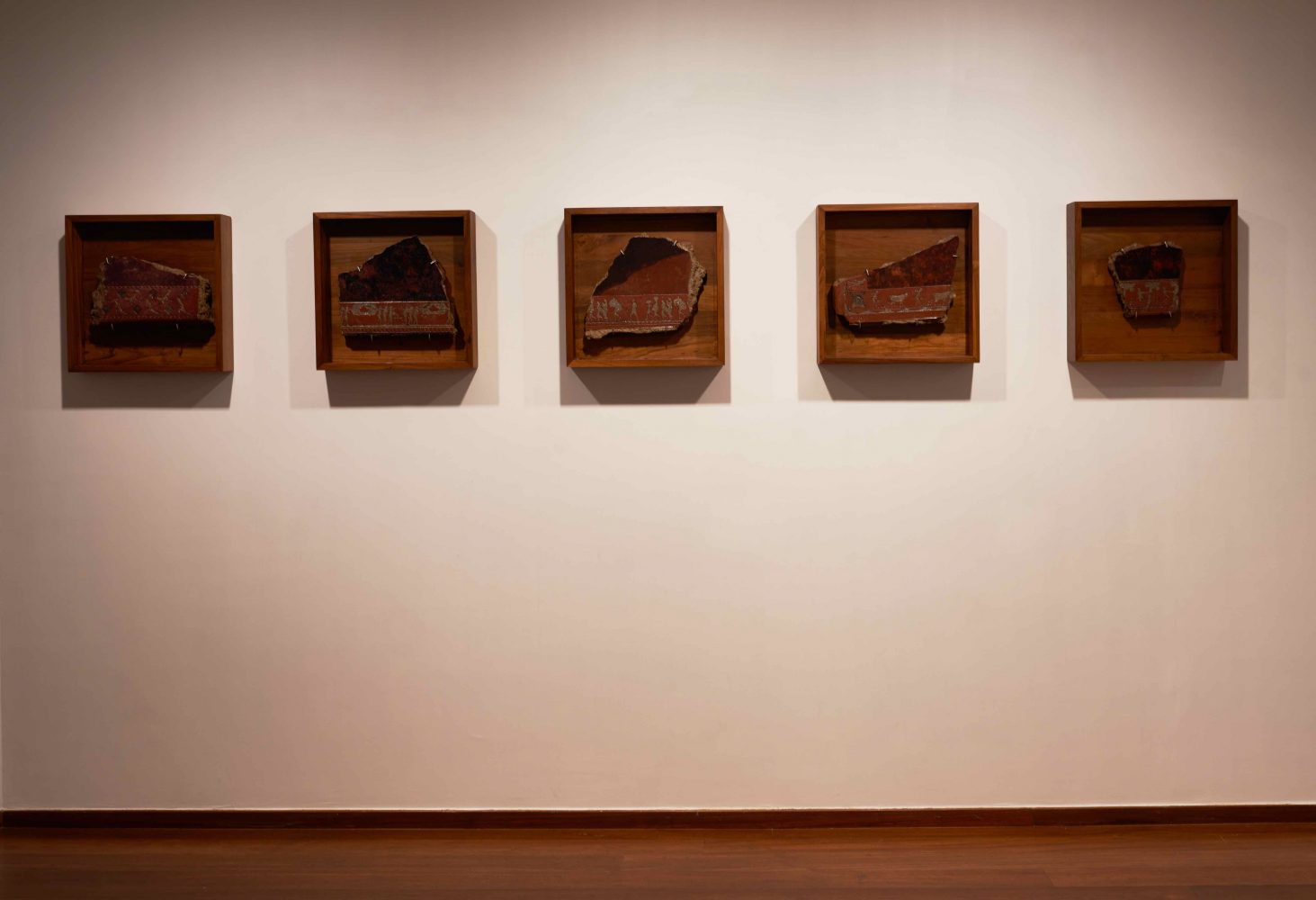
It has been long discussed that the spatial setting of space has never been static, but rather, it remains perpetually experiential. This is realized at its best in the works of studio photography where the photographer and subject of photograph equally engage with the space to unveil a socio-cultural reality. The orchestrated settings of a photographic space, punctuated by backdrops and props, initiate a performance. The acting, posing, and gesturing—initiated by and a response to the space—either mark allegiance to or subvert the studios. Ketaki Sheth’s first solo exhibition ‘Photo Studio’ of colour photographs at Chemould Prescott Road in association with PHOTOINK exemplifies the aforementioned propositions. Sheth revisits the 65 photo studios between the years 2015 and 2018 to put the dilapidated state of their infrastructure and vintage studio lights and cameras to use for the current exhibition. The exercise refuses to be another documentation of the dying art of studio photography, rather, the technical use of the available photographic apparatus creates and composes the photographs, part of the exhibition. The desire to trace the making of studio photography is not limited to a mimicked composition made on the viewfinder but is rather rooted in the making of the photograph. Sheth’s photographs recreated the space of a bygone era within the Chemould Prescott space, allowing the audience to anchor a double dialogue with the past in the present and vice versa. The exhibition is an opportune moment to remember the desire for the lustre of the selfies of the present-day was once a place of the textured surface; the immediacy with which a tab on the phone composes a photograph was once a ritual measured in time and distance to have a tangible photograph.
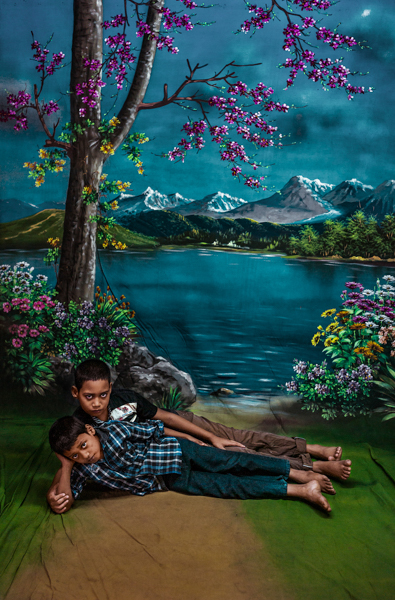
The new gallery space to reckon with is Experimenter, not in Kolkata, but in Sunny House, Colaba. To inaugurate the new flagship Bombay gallery, Experimenter’s choice of the artist Ayesha Sultana for the exhibition ’Making Visible’ rightly complements the history of the place that may have been relegated to the periphery from the public eye. The tall and square edifice, built in 1897 by the Nawab of Surat, has been home to multi-ethnic, stalwart families. The sunlight beams navigate the route to make its appearance irrespective of the scale of point of accessibility, similarly Sunny House epitomized the fluid identities not built on absolute reality. The constant presence of the sea in the paintings and the irregular shape of the hand-cast concrete floor sculptures are an invitation to draw multiple connotations from the audience without a prescribed singular meaning. Sultana, with the repetition of gesture and mark-making, has created an art practice that is a “verb” – a practice in motion and an artwork in action. Under the Waves opens up a seascape, transporting viewers into the receding crease of trough and crest. As the painting mediates on the gradual transition from deep blue at the bottom to light hues at the top, the painting moves from sublimity to divinity. Located in Sunny House, within close proximity of the Arabian Sea, the exhibition is in tandem with the physical environment of the vicinity.
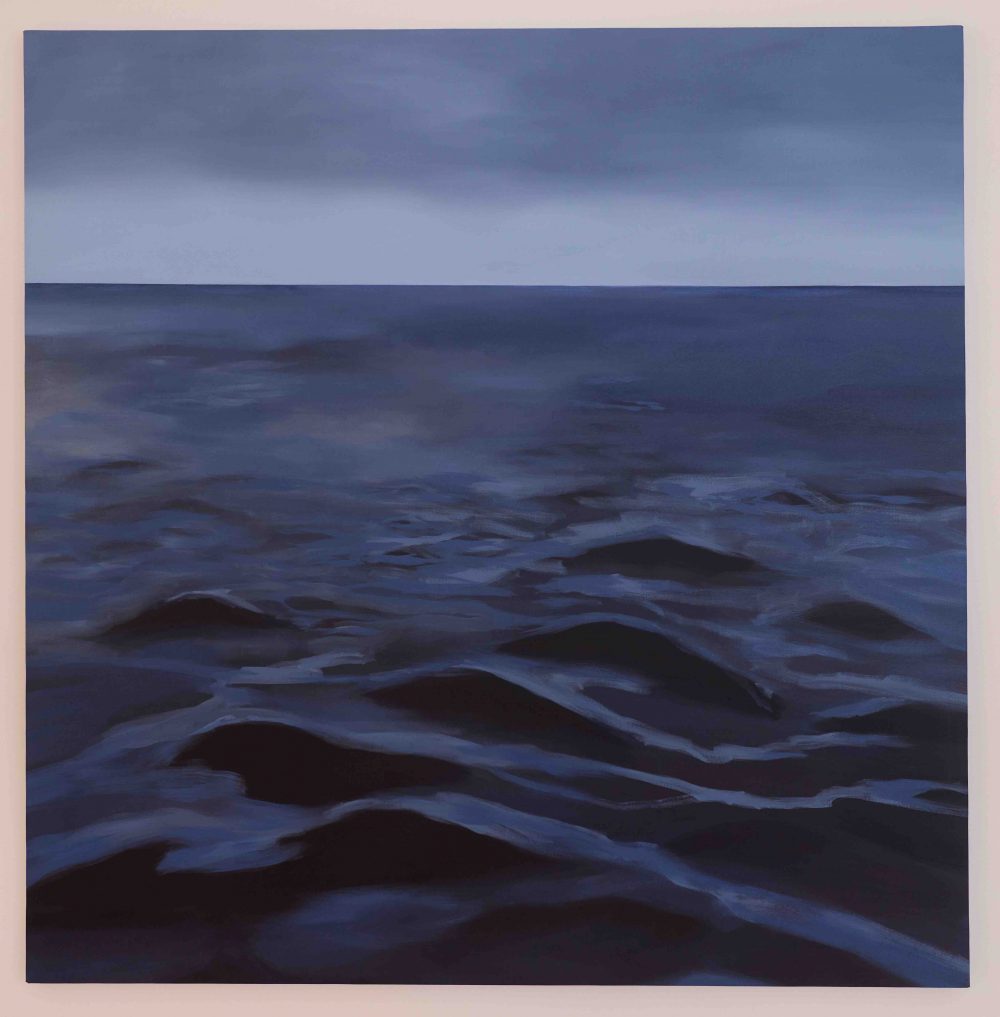
The architect Robert Stephens writes in Bombay Imagined: An Illustrated History of the Unbuilt City, “There’s a lot that makes up the Mumbai we now know. From the skyline to the streets, there have been several contributions to how the city is shaped”. The cosmopolitan charm of the city never loses sight of its glorious past. When architectural space is conducive to viewing and understanding arts within a historical context, the imaginative and observational powers are heightened to complement each other and allow the viewers to contemplate what they have witnessed.
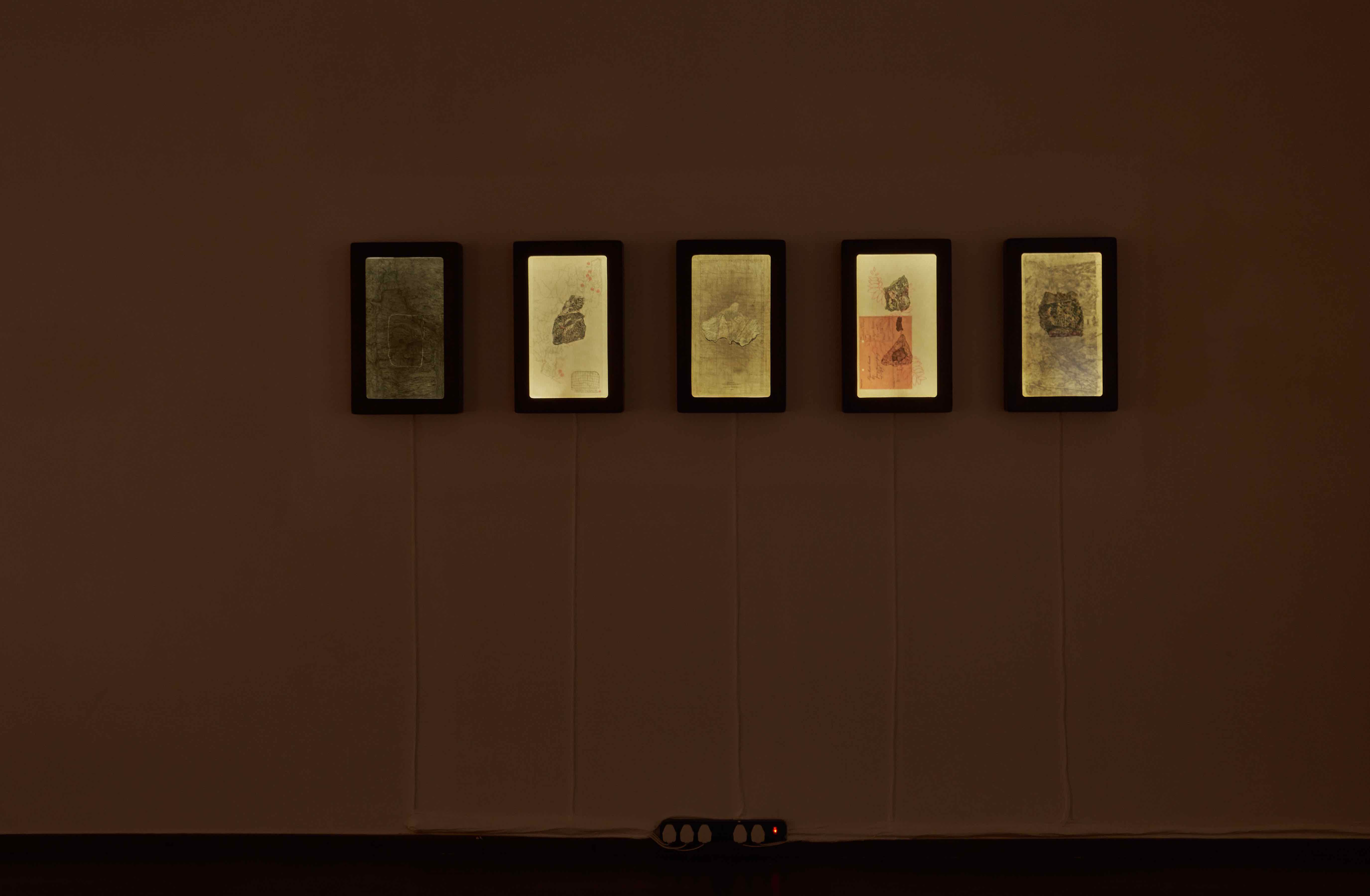
Sayan Chanda, ‘A Smear and the Crown’, Jhaveri Contemporary, Mumbai, 8 September–8 October 2022. / ‘Event, Memory, Metaphor’, TARQ, Mumbai, 14 July – 24 September 2022. / Ketaki Sheth, ‘Photo Studio’, In Collaboration with PHOTOINK, Chemould Prescott Road17 September – 20 October 2022. / Ayesha Sultana, ‘Making Visible’, Experimenter, Mumbai, 23 September – 29 October, 2022.














